At work, a man wears a T-shirt with a Z, a symbol often used by Russian troops in the Ukraine war – and has to pay a fine. Other symbols are also prohibited in Germany.
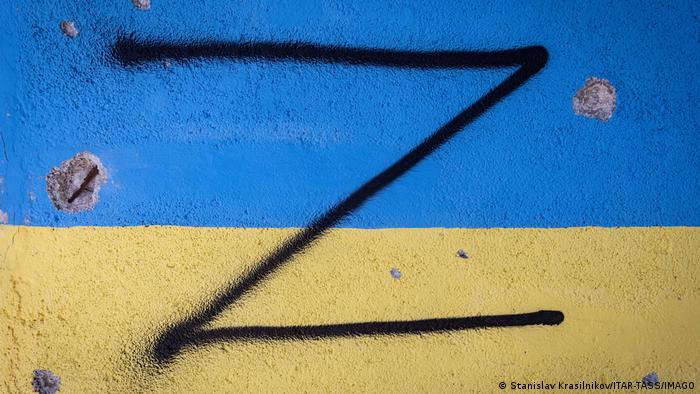
A Z on the Ukrainian flag on a house wall in eastern Ukraine: symbol for the Russian attack
Showing “identifiers of unconstitutional and terrorist organizations” is prohibited in Germany. This regulates §86a of the Criminal Code. However, the bans do not apply if the use of the signs “serves for civic education, the defense against unconstitutional efforts, art or science, research or teaching, reporting on current events or history or similar purposes”, for example this text.
Z symbol
The most recent ban is actually an exception because it is not about a state-defined “unconstitutional or terrorist organization”: A German of Russian origin has to pay a fine of 1,500 euros because he appeared at work with a Z on his T-shirt. This is reported by the “Frankfurter Allgemeine Zeitung”. The proceedings were discontinued against the payment of the money requirement. The Z symbol marks Russian military vehicles in Ukraine.
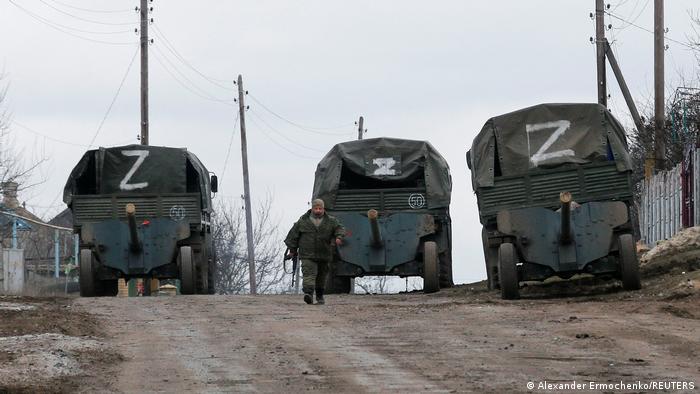
Russian military vehicles in Ukraine marked with the Z for a war of aggression contrary to international law
It has also established itself in Russia as a propagandistic sign of support for the war of aggression, for example on house facades. According to the responsible district judge, there are still no higher court rulings on wearing the Z symbol, reports the FAZ, but in the Wiesbaden judicial district, displaying the Z in public is considered a criminal offense because, according to criminal law, it is “suitable for promoting public peace disturb”.
Swastika
Most of the banned symbols in Germany date from the Nazi era. The swastika is probably his best-known identification mark, even if the swastika is much older and by no means a Nazi invention. Like all other Nazi symbols, it stands for an inhuman, racist ideology, the signs of which are normally not allowed to be shown in public in Germany.
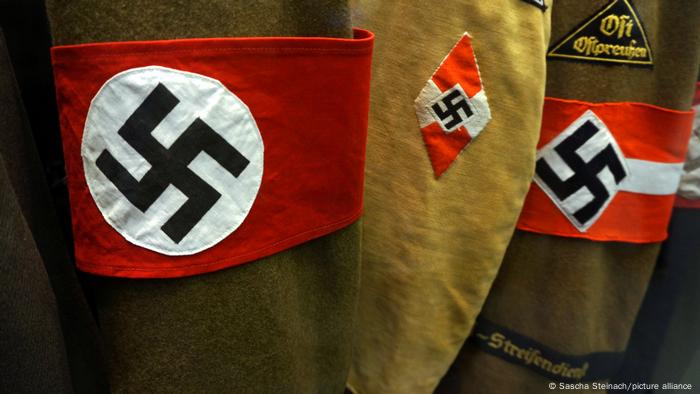
Even the armbands of uniforms wore swastikas during the National Socialist era, here in a museum
There are exceptions, like these swastikas on armbands from uniforms from the National Socialist era in a museum. Then the presentation serves an educational purpose or enlightenment. It is also permitted if the depiction clearly symbolizes rejection, such as a crossed-out swastika.
Hitler portrait
Depictions of Adolf Hitler were ubiquitous in Germany during the National Socialist era. For example, they hung in every office and could be seen on stamps and coins.
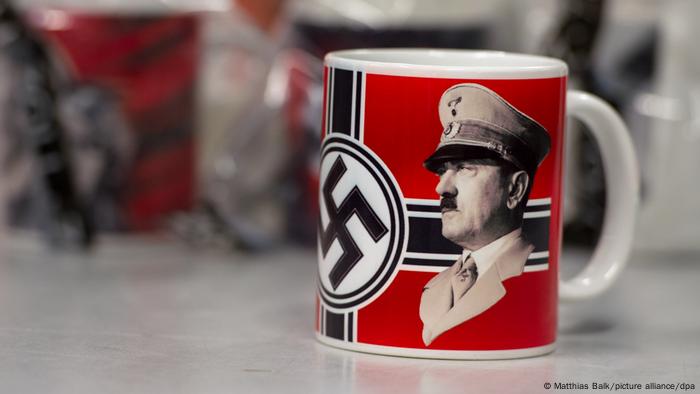
Cup confiscated by German customs
They were a symbol of Hitler's party, the NSDAP, and of the entire Nazi state. The distribution of Hitler's head picture, for example on this mug, is punishable by law. Criminal liability does not depend on proof of an anti-constitutional intention associated with the use.
SS rune
The Schutzstaffel, abbreviated SS, was the most important terrorist and repressive organ of National Socialism. The SS stood for unprecedented war crimes. It was significantly involved in the operation of the concentration camps and the Holocaust and was classified as a criminal form of organization at the Nuremberg trials.
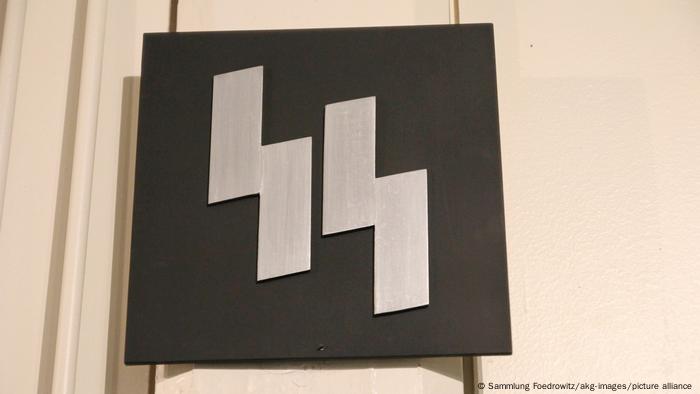
The so-called Siegrunen of the SS, as they could be seen on their uniforms, for example
The SS symbol, consisting of two so-called victory gores, was banned after the war, as were other SS symbols such as flags, badges, pieces of uniform, slogans, forms of salutation and songs. Incidentally, the double S is also not allowed on car license plates.
Hitler salute
A gesture can also be forbidden. That goes for the Hitler salute. The arm stretched diagonally upwards with the flat of the hand was the customary greeting of Adolf Hitler's time and an expression of the personality cult surrounding the dictator. The words “Heil Hitler” or “Sieg Heil” were usually spoken. Today the Hitler salute, which is used again and again by neo-Nazis, is banned in Germany.
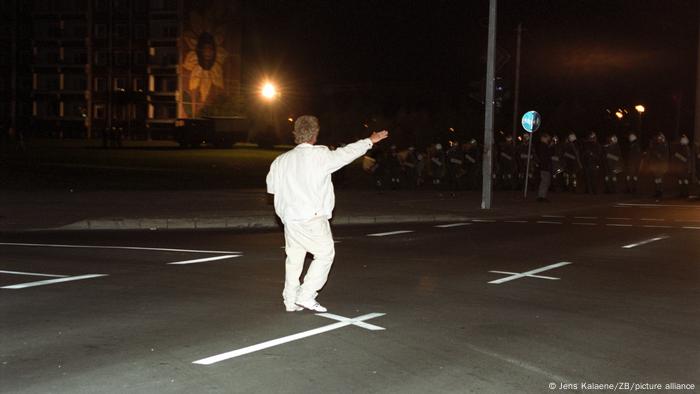
During the xenophobic riots in Rostock in 1992, a man shows the forbidden Hitler salute
The criminal offense is restricted, for example, by use in documentaries, plays or if the distancing from Nazi rule is obvious and clear. However, neo-Nazis also use slight modifications of the Hitler salute to circumvent the ban. But the following applies to all banned signs: If the modification is “confusingly similar” to the original, as stated in §86a, the ban also applies to it.
IS flag
Islamic terrorist organizations such as al-Qaeda or the so-called Islamic State (IS) are banned in Germany. This also applies to the IS flag, often also called the black banner. It has been banned as a mark of an unconstitutional organization since 2014.
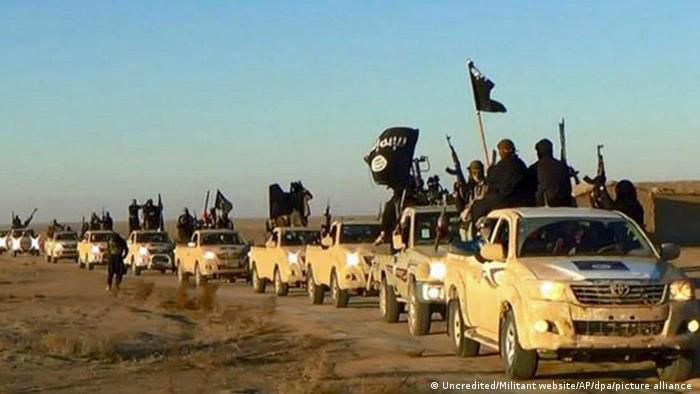
Members of the Islamic State terrorist militia in the Syrian-Iraqi border area wave the IS flag
The punishability of using the IS flag was criticized at the time because its content (“There is no god but God”; “Mohammed is the prophet of God”) as a creed is covered by the protection of religious freedom. The Federal Ministry of the Interior then declared that the ban was not directed against Islamic symbols in general, but against their use by the IS for unconstitutional purposes.
PKK flag
The Kurdistan Workers' Party, PKK, is classified as a terrorist organization in Germany and the entire EU.
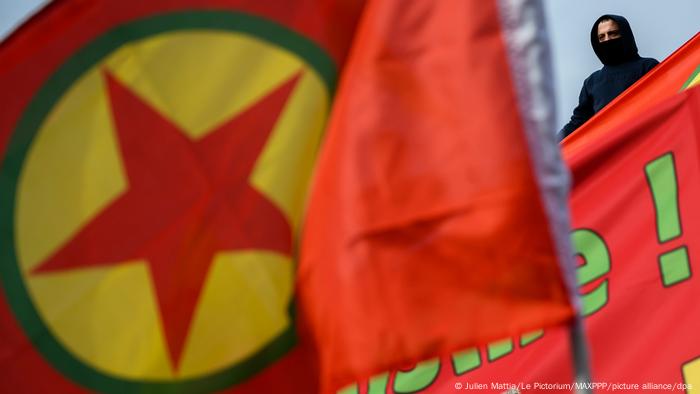
The EU classifies the PKK as a terrorist organization, flying their flag is in Germany Prohibited
Just as it is prohibited itself, the display of the PKK flag is also prohibited in Germany. Nevertheless, it keeps appearing at demonstrations.